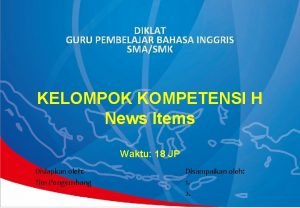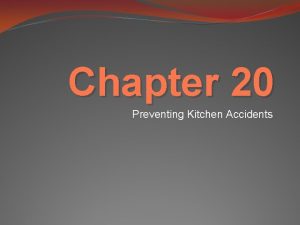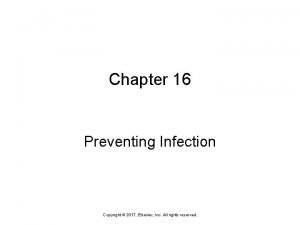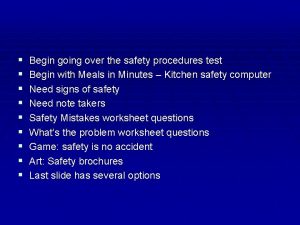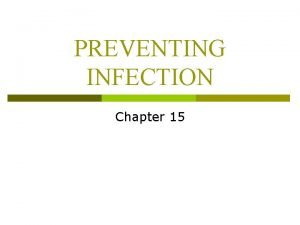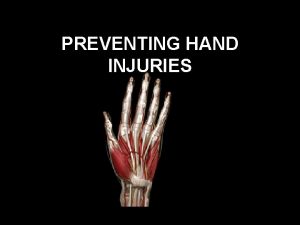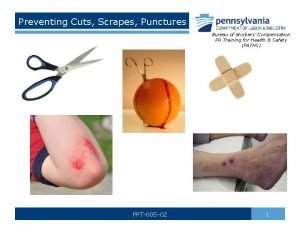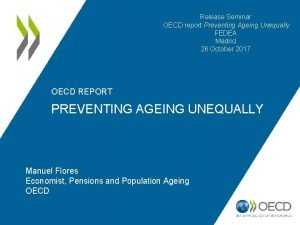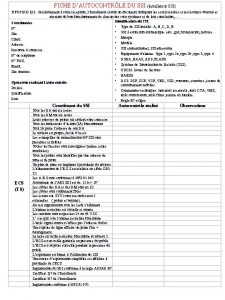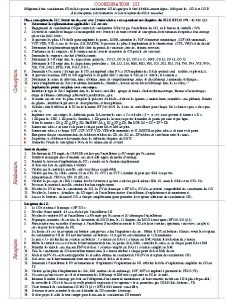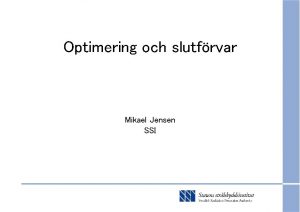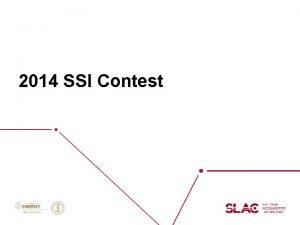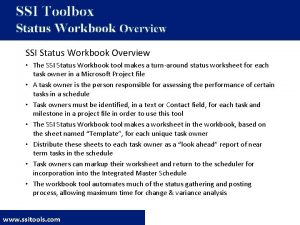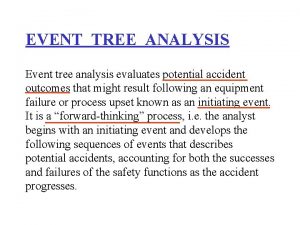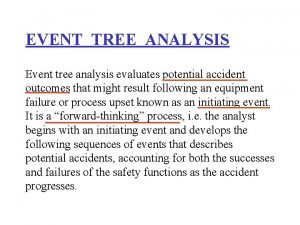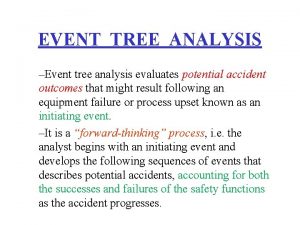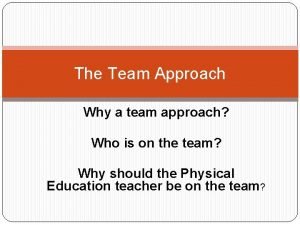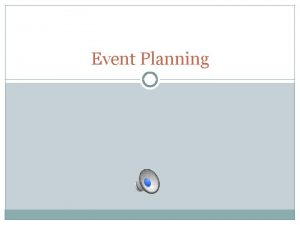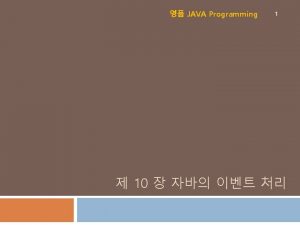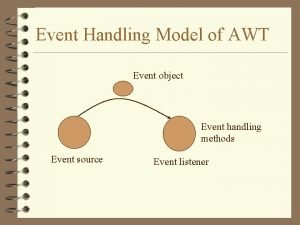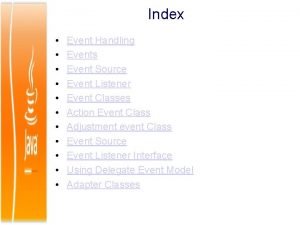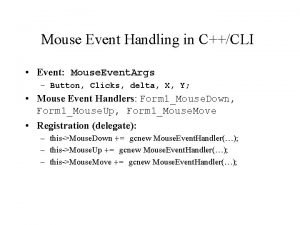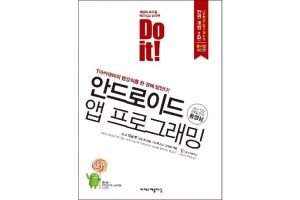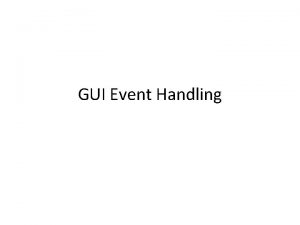SSI Event Analysis A Team Approach to Preventing


























- Slides: 26

SSI Event Analysis A Team Approach to Preventing Surgical Site Infections Vicki Sweeney, RN, CIC Methodist Hospital Henderson, KY

SSI Event Reporting Template developed by: Shelby Lassiter, RN, BSN, CPHQ, CIC North Carolina Quality Center www. ncqualitycenter. org

Surgical Site Infections (SSI) According to CDC, 2 -5% of patients who undergo surgical procedures will develop an SSI increases patient days and cost and can potentially lead to increased morbidity.

Team Efforts to Prevent SSI In order to prevent SSI, a team effort is indicated. No longer is the Infection Preventionist the only person to evaluate and initiate strategies to decrease the risk of SSI. More hospitals are taking a team approach to reviewing the process and learning better ways to prevent harm.

Event Analysis There are many methods of performing event analysis. n Chart Review n Post op screening via surgeon or patient questionnaires n Microbiology review n * Team evaluation and analysis

Teamwork is essential in targeting “ZERO” Surgical Site Infections (SSI)

Team Event Analysis Team event analysis includes staff from: n Infection Prevention n Pre-op n OR n PACU n Post-op n Surgeon n Other individuals as indicated; Micro, etc.

Team Event Analysis Performing an SSI event analysis allows the team to identify opportunities to prevent SSI that may not be identified by just performing a chart review, such as: • Traffic patterns in the OR room • Where the surgical clipping is taking place. Pre-op or in OR • Any instruments/equipment where IUSS (Immediate use steam sterilization) was performed • Temperature and Humidity issues in OR room • Illness among staff, staff shortages, training, etc. • ETC….

Initial Identification of Patient with SSI n n Identify patient as having an SSI based on NHSN Definitions Notify members of team that an SSI has been identified Send out SSI Event Analysis Tool to each area for completion of their section. Schedule time to meet to review and discuss findings (within 7 -10 days)

SSI Defect Analysis Tool Section 1 -Pre-op Phase • Ht. , Wt. , BMI • Where is patient living prior to admission? • Location and date pre-op teaching done • Was patient instructed in the following: • Pre-op shower/bath • Not to shave operative area for 72 hours prior to surgery? • To avoid smoking/tobacco use as far in advance as possible • To report any signs/symptoms of infections pre-op to surgeon? • How to properly use CHG cloths? • If diabetic, importance of glucose control peri-operatively? • Importance of hand hygiene for self, visitors and hospital staff? • Was pre-op MRSA/S. aureus surveillance testing performed per protocol? • Was skin assessed pre-op for boil or other skin lesions/rashes? • Were abnormal pre-op assessment labs reported to surgeon? • Listing of pre-op medications • Pre-op HA 1 c (if diabetic) • Highest pre-op glucose • How was skin prepped? Shaved? Clipped? No hair removal? • Any social or language barriers identified?

SSI Defect Analysis Tool: Section 2 OR and PACU • Date of Surgery including day of the week • Type of Surgery • Surgeon(s) • Was surgery Emergent? Urgent? Elective • Was Foley inserted in OR for surgery • ASA Score and Wound Class • Incision cut times: Start and Close • Pre-op Antibiotics: Type and Dose (If cut time ≥ 3 hours, was antibiotic re-dosed)? • EBL or any blood/blood products given in OR? • Tourniquet Time (if used) • OR Room Number • Date last room air exchange measured prior to date of surgery with number of air exchanges • Any problems with maintaining appropriate humidity and temperature in OR room on date of surgery? • Any issues with equipment? • Any breaches in sterile field/protocol? • Any technical difficulties during case? • Anything flashed sterilized for case? • Patient lowest temp. , lowest Sa. O 2, Highest glucose level in OR and PACU • What skin prep solution was used prior to surgery? • Maximum number of people documented as being in room during case. Vendors? Students? Other Asst. ? • Anything unusual about this case otherwise?

SSI Defect Analysis Tool: Section 3 – Post –Op Area(s) • List all locations for patient post-operatively • Any antibiotics given post-op? List date antibiotics stopped • Date of 1 st dressing change • 1 st dressing changed by whom? • Was sterile technique used to change dressing? • Type of dressing applied with first dressing changed • Was urinary catheter in after leaving PACU? If so, list date discontinued • Any wound drains post-op? If yes, list date drains removed. • Lowest temperature for 1 st 24 hours post-PACU • Lowest Sa. O 2 for 1 st 24 hours post-PACU • Highest glucose level for 1 st 24 hours post-PACU and highest glucose for POD 2 • Did patient return to OR during index procedure admission? If so, when? • Any social or language barriers identified? • Any post-operative events that were out of the ordinary?

SSI Defect Analysis Tool: Section 4 – Infection Prevention • Number of days between surgery and first signs/symptoms of infection • Was patient readmitted? • Signs and symptoms of infection at time of presentation • Cultures taken? Date and organism identified. MDRO? • Type of SSI: SIP, DIP, Organ Space • Risk Factors present pre-index procedure: • Diabetes • Hyperglycemia w/o formal diagnosis of DM • Immunosuppressive medication or diagnosis • Tobacco use (smoker, chewer, dipper, etc. ) • Untreated remote infection (s) pre-op • Positive pre-op MRSA screening or past history of MRSA • Did patient develop any infections other than SSI post-operatively? • Identify which staff were notified with date

SSI Defect Analysis Tool: Section 5 Contributing Factors (All areas to complete) Answer questions as accurately as possible, elaborating as needed. If any issues are identified, try to determine why they occurred, asking “Why” at least five times to drill down to root cause. Communication • Was verbal and written communication during hands off clear, accurate, clinically relevant and goal directed? At time of transfer onto unit? At time of transfer to another unit if applicable? At time of discharge to receiving facility or to patient/family if going home? • Looking back on the case now, were there any opportunities to prepare the patient better for discharge? • Was staff comfortable expressing concern about patient safety issues? To management? To physician? • Did attending physician provide clear instructions to the team? To patient and family/significant other?

ANTIBIOTICS, INCISION CARE AND INFORMATION AVAILABILITY • Was there a clear protocol for pre-op antibiotics to be administered in a timely manner? • Was antibiotic protocol based on current evidence-based medical science? Weight based? • When was the antibiotic protocol last reviewed? • Was there a clear protocol for incision care and dressing application/removal/changes? If so, was it followed? • Was dressing change protocol based on current evidence-based medical science? When was the policy last reviewed? • Were test results available in a timely manner to help make care decisions? • Were test results accurate? • Did computer system(s)/software generate any errors? • Did the computer system(s) software malfunction? • Was there any user error in use of computer system(s)/software?

TRAINING AND EDUCATION FACTORS • Was surgeon knowledgeable, skilled, and competent? • Were there any observed surgical technique issues? • Were other team members (including vendors in OR) knowledgeable, skilled, and competent? • Did surgeon and team follow established protocols? • Did team members seek supervision or help appropriately?

CAREGIVER FACTORS • Were any caregivers observed to be fatigued during care/surgery? • What was staffing like on the unit during the patient’s stay? • Did the caregiver’s outlook/perception of own professional role impact on this outcome? (e. g. ego issues, fear of confrontation, etc. ) • Was physical or mental health of any caregiver a factor in this outcome?

ENVIRONMENTAL FACTORS • Was there any construction or remodeling of any type going on in the area during this patient’s stay in your area? If so, describe: • Were there any housekeeping issues during this patient’s stay that may have impacted the outcome? • What are cleaning protocols for an occupied bed in your area? For room cleaning between patients? • Was there adequate equipment and was it in good working order? • What are the equipment cleaning protocols in your area and how is cleaning between patients assured? • How did workload impact care during this patient’s admission on your unit? • Any other organizational factor(s) you can think of that may have impacted this outcome?

SSI Defect Analysis Tool: Sect. 6 --ANALYSIS SSI Defect Analysis Tool: Section 6 - Analysis Review data collected and list below the contributing factors to this SSI. Rate each factor on its importance to this event and future events. Importance to future current events 1(low) to 5 (high) Contributing Factors

INTERVENTIONS

ACTION PLAN

STRENGTH OF INTERVENTIONS Strength of Interventions Weaker Actions Intermediate Actions Stronger Actions Double check Checklists/Cognitive aide Architectural/physical plant changes Warnings & labels Increased staffing/Reduce workload Tangible involvement and action by leadership in support of patient safety New procedure, memorandum or policy Training and/or education Redundancy Simplify the process/remove unnecessary steps Enhance communication (read-back, Standardize equipment and/or process of SBAR, IPASS the BATON, etc. ) care map Additional study/analysis Software enhancement/modification New device usability testing before purchasing Eliminate look alike/sound alike(s) Engineering control (forcing functions) Eliminate/reduce distractions Adapted from John Gosbee, MD, MS Human Factors Engineering

INTERVENTIONS AND ACTION PLANS The analysis, interventions and action plan should be shared with staff and physicians. SSI’s should be monitored and reported to physician and staff committees. Additional meetings to evaluate interventions should be scheduled , as indicated, by surveillance or requests from team members, staff or physicians.

Summary n n n While the form looks very time intensive, it is not, as each person completes their own section. It allows the team members to identify areas they might not have considered and allows for a process to assure that the procedures we have in place are being followed. Changes in practice that were identified during event analysis have led to decreased SSI infections and provides more emphasis on prevention and evidence based practice. Physicians have been supportive of the process as it has helped to prevent SSI. It is a great way for the Infection Preventionist to develop relationships with staff and work toward a common goal.

A TEAM APPROACH TO PREVENTING SSI A team approach allows staff to identify opportunities for improvement and provides our patients with a safe environment in which to receive their care.

QUESTIONS Vicki Sweeney, RN, CIC vsweeney@methodisthospital. net 270 -827 -7435
 Swot analysis of event venue
Swot analysis of event venue Near miss adverse event sentinel event
Near miss adverse event sentinel event Simple and compound events
Simple and compound events Independent or dependent
Independent or dependent Dependent events examples
Dependent events examples Bridge breaks in central java the text tells us about
Bridge breaks in central java the text tells us about Language features of news item text
Language features of news item text Chapter 24 lesson 2 preventing and treating stds
Chapter 24 lesson 2 preventing and treating stds Chapter 9 lesson 2 resolving conflicts
Chapter 9 lesson 2 resolving conflicts Chapter 20 preventing kitchen accidents
Chapter 20 preventing kitchen accidents Chapter 16 preventing infection
Chapter 16 preventing infection Chapter 14 promotion of safety
Chapter 14 promotion of safety Preventing kitchen accidents worksheet
Preventing kitchen accidents worksheet How does robert vischer's theory prevent discrimination
How does robert vischer's theory prevent discrimination Chapter 9 resolving conflicts and preventing violence
Chapter 9 resolving conflicts and preventing violence Chapter 13:2 preventing accidents and injuries
Chapter 13:2 preventing accidents and injuries Chapter 4 preventing injuries through fitness
Chapter 4 preventing injuries through fitness Chapter 15 preventing infection
Chapter 15 preventing infection Preventing hand injuries
Preventing hand injuries Preventing cuts
Preventing cuts Preventing ageing unequally
Preventing ageing unequally Which is mainly responsible for preventing erosion
Which is mainly responsible for preventing erosion Bureaucratic bypass syndrome
Bureaucratic bypass syndrome Team spirit becomes team infatuation
Team spirit becomes team infatuation The white team cheers for the blue team, just like
The white team cheers for the blue team, just like Carron's conceptual model of cohesion 1982
Carron's conceptual model of cohesion 1982 Transdisciplinary team approach
Transdisciplinary team approach





